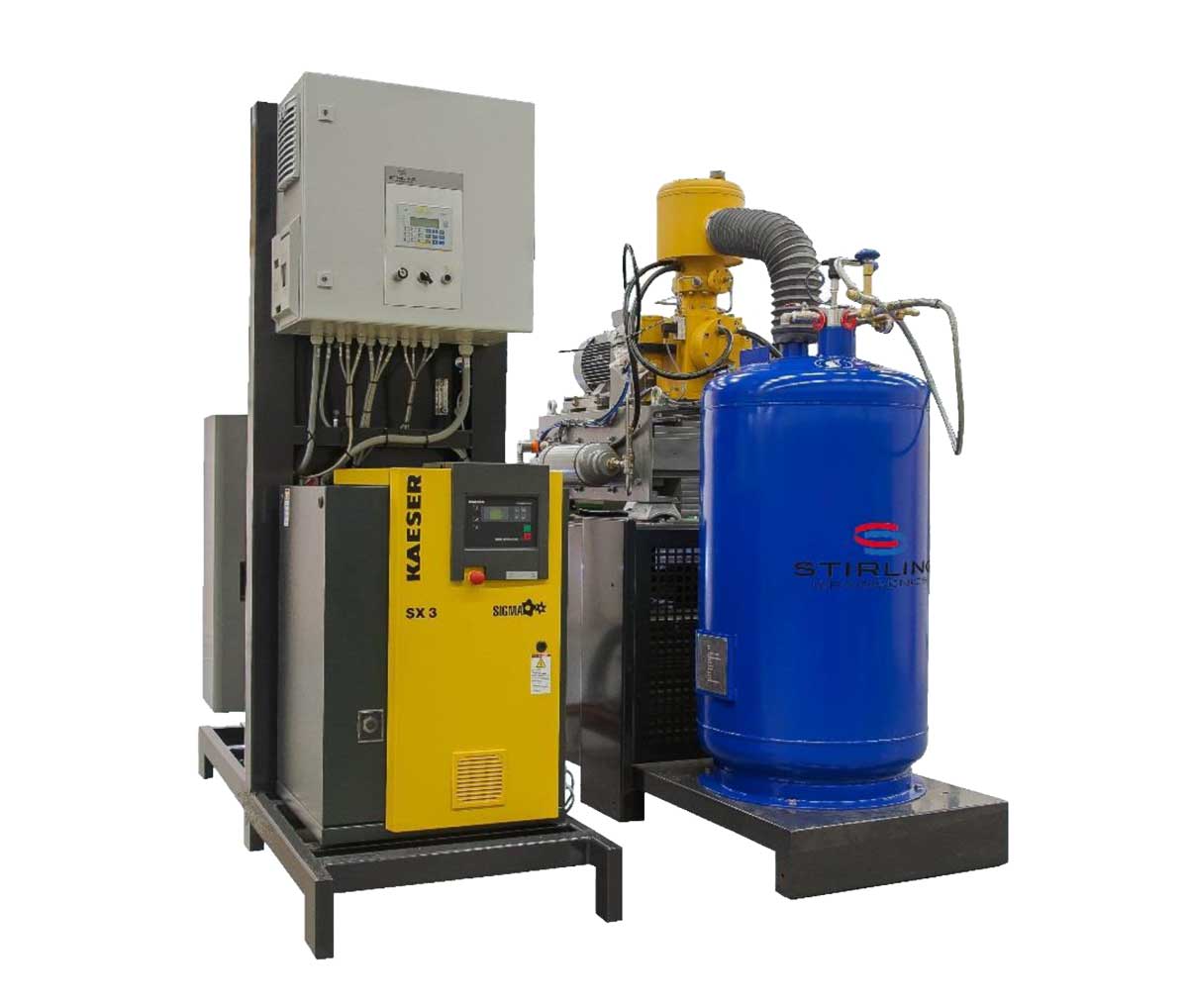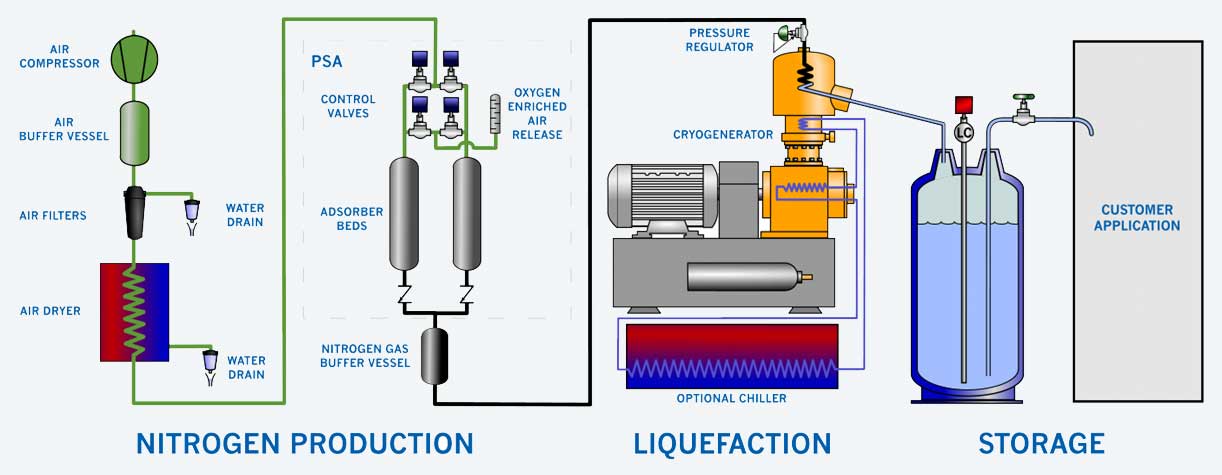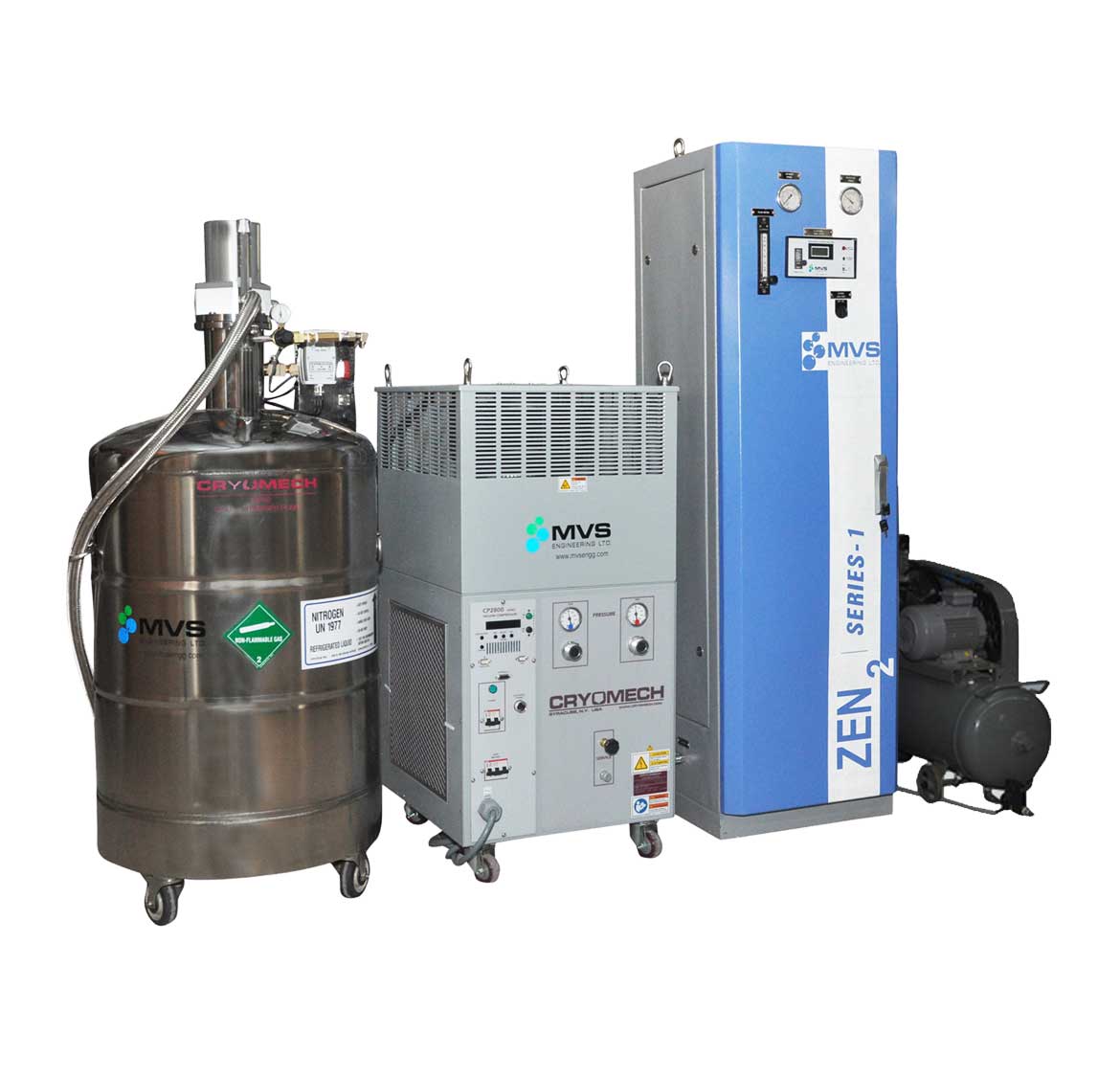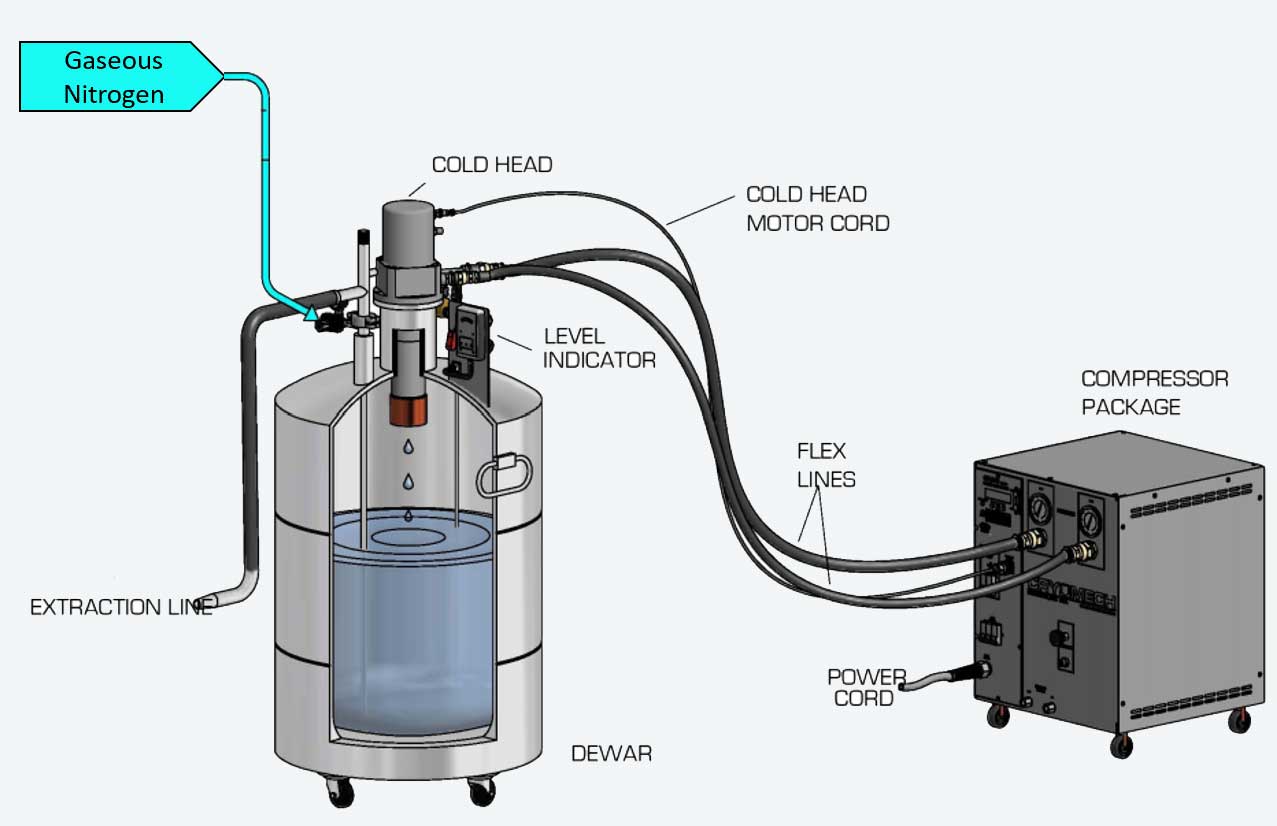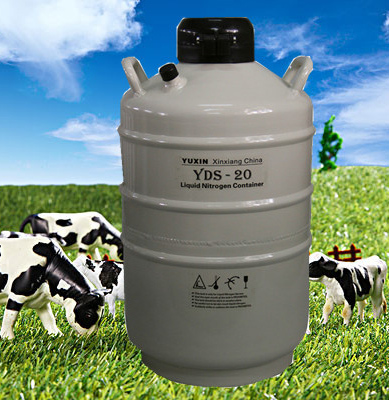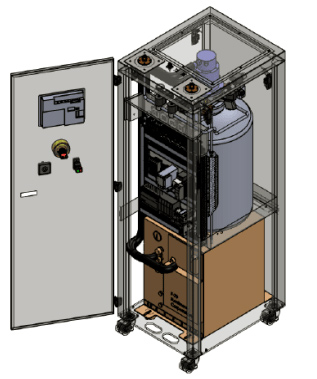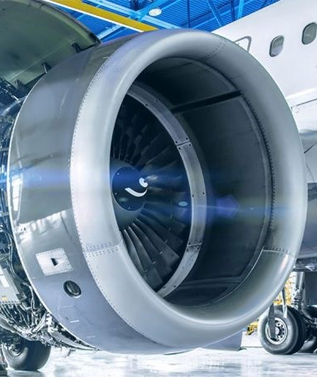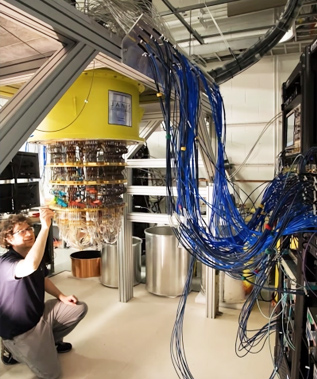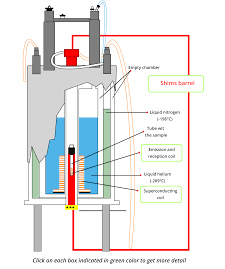All Cryomech Liquid Nitrogen Plants work with exactly the same group of components.
There needs to be a supply of nitrogen gas. Nitrogen makes up 78% of the air we breathe and can be separated from the rest of air’s components. Gaseous Nitrogen is produced from systems manufactured in India by MVS Engineering.
There is a storage vessel for the LN2. A dewar is a vacuum insolated vessel designed to store very, very cold liquids.
Gaseous Nitrogen from the MVS system is taken to a cryorefrigerator to condense the nitrogen gas inside the dewar into liquid. The source of Cryomech’s expertise is in the manufacture of Cryorefrigerators (Cryocoolers). Cryorefrigerators are machines that remove heat down to temperatures below 120K (-153° C).
The Cryomech Cryorefrigerator consists of a pair of stainless steel flexible helium lines, a helium compressor package and a cold head. The cold head is installed directly at the very top of the dewar in which the liquid nitrogen is to be collected. From the top, the cold head extends to the neck of the dewar to cool down the nitrogen to 77K (-196°C) that enters the dewar. Nitrogen gas changes its state to liquid when it comes in contact with the cold head heat exchanger. The liquefied nitrogen drips down from the heat exchanger into the dewar. The pressure inside the dewar gets typically lower in this process, but the regulator lets in more nitrogen in the dewar to maintain the pressure at the predefined level. In the dewar, the flow rate of nitrogen gas is regulated by the rate of liquefaction.

 Stirling Cryogenics is the world’s leading specialist in stand-alone cryogenic cooling systems. This is because of the success of their Stirling cryogenerator (reversed Stirling cycle based crycooler). Stirling Cryogenics developed the Stirling Cycle Cryogenerator almost 60 years ago and it has been the cornerstone of their cooling systems ever since.
Stirling Cryogenics is the world’s leading specialist in stand-alone cryogenic cooling systems. This is because of the success of their Stirling cryogenerator (reversed Stirling cycle based crycooler). Stirling Cryogenics developed the Stirling Cycle Cryogenerator almost 60 years ago and it has been the cornerstone of their cooling systems ever since.